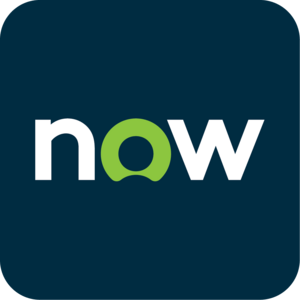How to Build a Unified Solution to Streamline Customer Service, Marketing, and Sales Activities in Salesforce?
Updated on December 28, 2025
Have you ever wondered how businesses manage to provide consistent and personalized experiences across customer service, marketing, and sales? The answer lies in building a unified solution within Salesforce that harmonizes these critical functions. In today’s competitive landscape, delivering a cohesive customer journey is paramount. This blog will guide you through the process of creating such a solution, ensuring your organization can meet and exceed customer expectations.
Understanding the Need for a Unified Solution in Salesforce
In many organizations, customer service, marketing, and sales operate in silos, leading to fragmented customer experiences. For instance, a customer might receive marketing emails about products they already purchased, or sales teams might lack visibility into customer service issues, hindering their ability to close deals effectively. A unified solution in Salesforce addresses these challenges by providing a comprehensive view of each customer, enabling teams to collaborate more effectively and deliver personalized interactions.
>> Related Post: Best CRM Software and Systems in 2025
Steps to Build a Unified Solution in Salesforce
1. Assess Your Current Processes
Begin by evaluating your existing workflows in customer service, marketing, and sales. Identify areas where information is siloed or processes are redundant. For example, if your marketing team uses a separate platform from your sales team, consider the inefficiencies this separation creates.
2. Integrate Data Sources
Centralize your data within Salesforce to ensure all teams have access to the same information. Utilize Salesforce’s data integration tools to connect various platforms and databases. This integration allows for real-time data sharing, ensuring that marketing campaigns, sales strategies, and customer service responses are informed by the most current information.
3. Implement Consistent Communication Channels
Ensure that all customer interactions, whether through email, social media, or phone calls, are logged within Salesforce. This consistency provides a complete customer history, allowing teams to customize their approaches based on past interactions. For instance, if a customer has a pending service issue, the sales team can address it proactively during their communications.
4. Automate Workflows
Make use of Salesforce’s automation capabilities to organize tasks across departments. For example, when a lead reaches a certain score in your marketing automation platform, Salesforce can automatically create a task for the sales team to follow up. Similarly, if a customer submits a service request, an automated notification can be sent to the relevant team members, ensuring timely responses.
5. Utilize AI-powered tools
Incorporate Salesforce’s AI features, such as Agentforce, to enhance decision-making. Agentforce can analyze customer data to provide recommendations for next-best actions, predict customer behavior, and personalize marketing messages. For example, if Agentforce identifies that a customer is likely to churn, it can prompt the sales team to offer a retention incentive.
>> Related Post: Top Salesforce Service Cloud Implementation & Consulting Companies in 2025
Real-World Examples of Unified Solutions in Action
-
Retail Industry
A global retail company integrated its marketing, sales, and customer service departments within Salesforce. By unifying these functions, they achieved a 32% increase in customer engagement and a 34% rise in customer lifetime value. This success was attributed to personalized marketing campaigns informed by sales data and proactive customer service interventions.
-
Financial Services
A financial institution utilized Salesforce to connect its various departments, resulting in a 27% decrease in the cost of acquiring new customers. The unified platform allowed for better data sharing, enabling more targeted marketing efforts and efficient sales processes.
>> Related Post: Salesforce vs ServiceNow: Which One is Better in 2025?
Salesforce Professional Services Offered by Cloud Consulting Inc.
At Cloud Consulting Inc., we are dedicated to turning your business aspirations into reality through our comprehensive Salesforce services:
Conclusion
Building a unified solution in Salesforce is essential for organizations aiming to provide exceptional customer experiences. By integrating customer service, marketing, and sales functions, businesses can operate more efficiently and respond to customer needs more effectively. With the right approach and tools, your organization can achieve a cohesive and responsive customer engagement strategy.
FAQs
1. Why is unifying customer service, marketing, and sales important?
Unifying these functions ensures that all teams have access to the same customer information, leading to more personalized and effective interactions. It eliminates silos and promotes collaboration across departments.
2. How does Salesforce facilitate the unification of these functions?
Salesforce provides a comprehensive platform that integrates various business processes. Its tools allow for data sharing, process automation, and AI-driven insights, enabling a unified approach to customer engagement.
3. What role does AI play in a unified Salesforce solution?
AI tools like Agentforce analyze customer data to provide actionable recommendations, predict behaviors, and personalize interactions, enhancing the effectiveness of your customer engagement strategies.
4. Can small businesses benefit from a unified Salesforce solution?
Absolutely. A unified solution can help small businesses streamline their operations, improve customer satisfaction, and scale their efforts more efficiently.
5. How long does it take to implement a unified solution in Salesforce?
The timeline varies depending on the complexity of your organization’s processes and the level of customization required.








